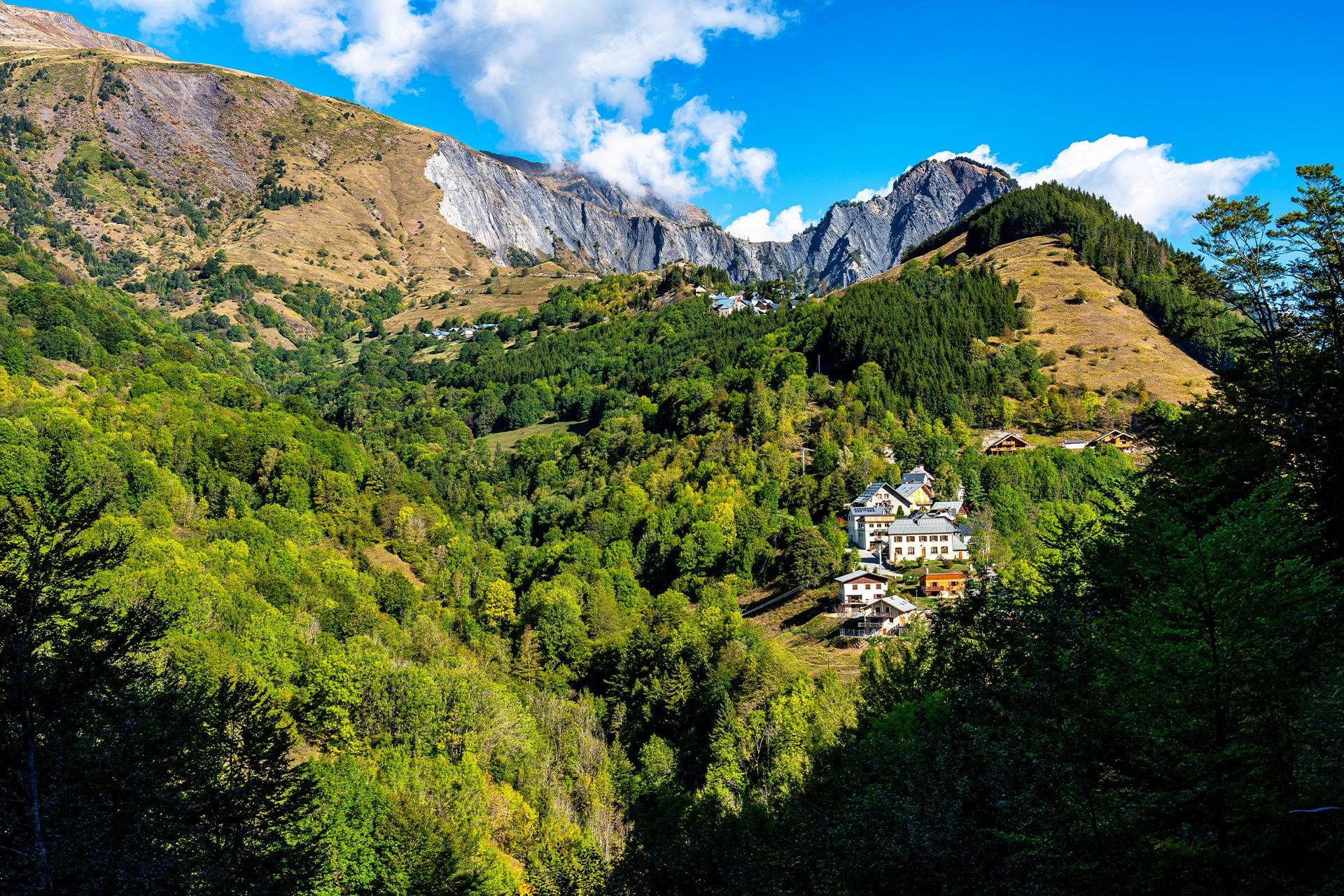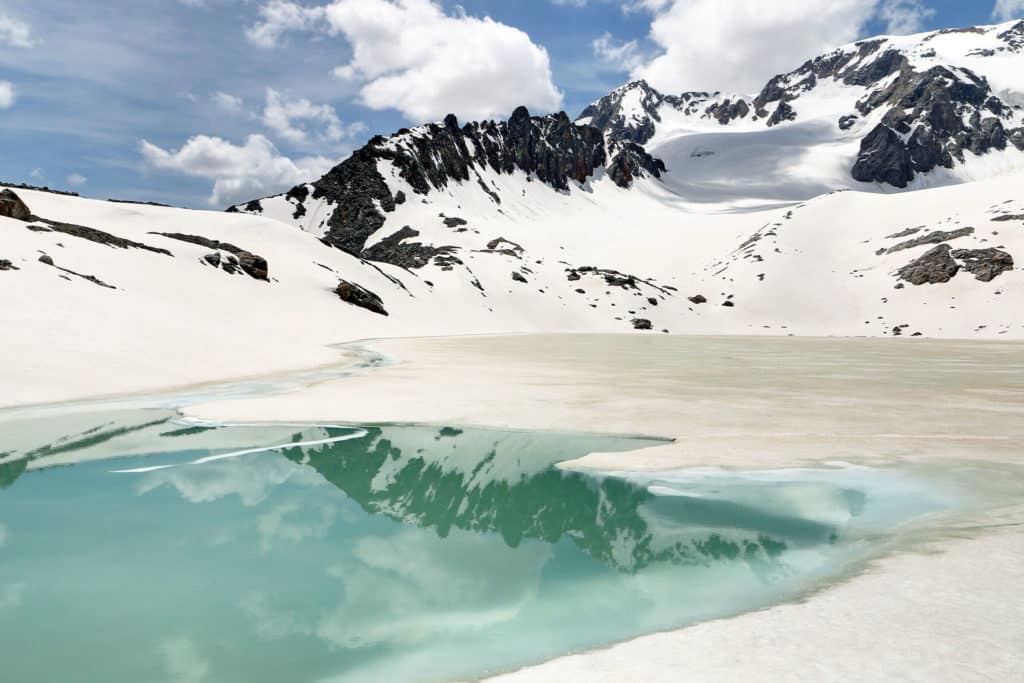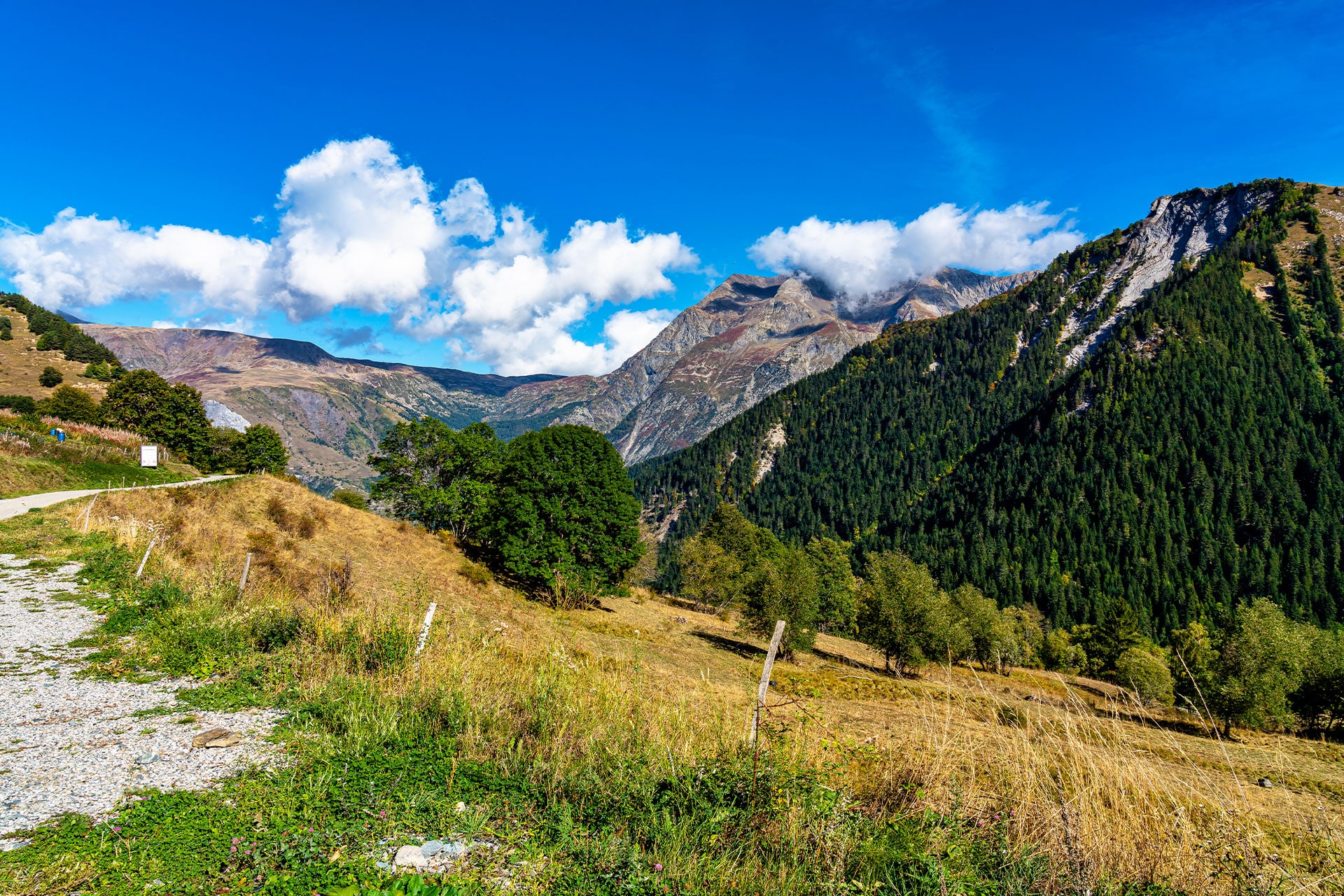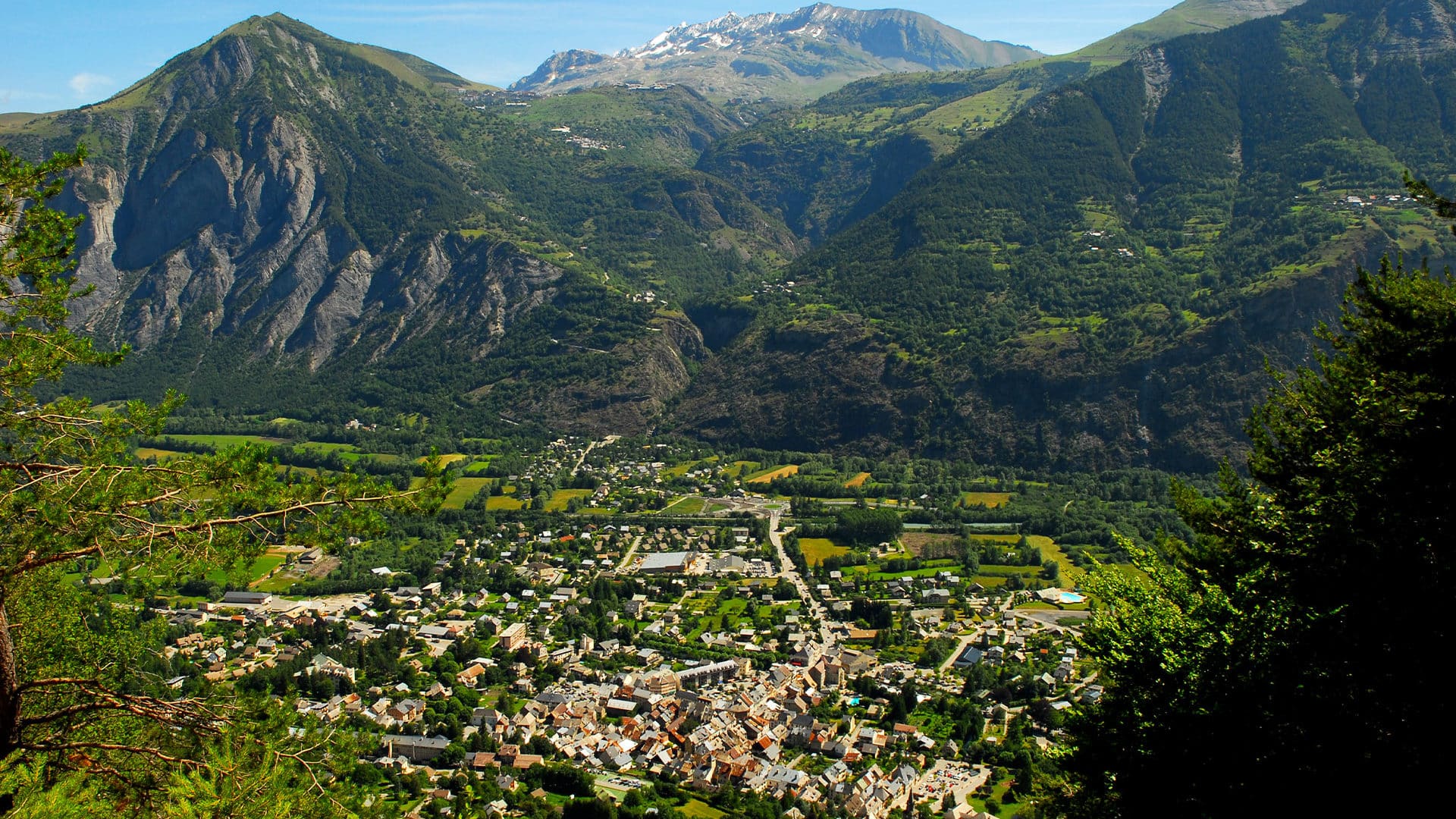Le Bourg-d’Oisans is located on a mountain plain. Its economy is based on agriculture, while at the same time being one of the Isère department’s leading tourist destinations. Its proximity to the ski resorts of Alpe-d’Huez and Les Deux-Alpes, near Oz-en-Oisans, makes it even more attractive to holidaymakers. Our 5-star campsite with heated indoor swimming pool is located in the commune of Bourg-d’Oisans, offering an ideal location for enjoying all the charms of this area rich in tourist activities in Isère.

Natural spacesof Le Bourg-d’Oisans
Nature sauvage
The high-altitude plain of Bourg-d’Oisans offers an enchanting setting, criss-crossed by a network of canals and hedges in the Oisans valley, in the Auvergne-Rhône-Alpes region. In this bocage, visitors have the chance to discover many unusual and endangered species. These environments are home to the yellow-bellied toad and the alpine newt, two rare and protected amphibians that spend most of their time on small waterholes. These vast spaces also serve as summer quarters for migratory bats. Falcons and other birds of prey, as well as eagle and long-eared owls, take refuge on the cliffs overlooking the plain.
The flora of Bourg-d’Oisans is not to be outdone. In the ruisseau de la Rive, you’ll find, among other specimens, the aquatic buttercup, an endemic herbaceous plant. Higher up in the mountains, you’ll find many other natural gems, including blue thistles, martagon lilies and orange lilies.
Le Bourg-d’Oisans is also famous for Le Lauvitel, a 689-hectare mountain lake (the largest in the Écrins massif). This integral reserve – the only one located within a national park – is not accessible to the general public. However, you can still enjoy the enchanting downstream shoreline, where marmots and chamois can be spotted.

The originsof Bourg-d’Oisans
30,000 years ago, an imposing glacier covered the Romanche and Vénéon valleys. Global warming led to the gradual melting of the ice. The result was the disappearance of the ancient Lake St. Lawrence. It was drained in the 19th century to enable farming on particularly rich alluvium.
But even though the Bourg-d’Oisans plain remained marshy and subject to flooding, it didn’t wait for the diking and drainage works to develop. As early as the 11th century, a priory already existed at the foot of the mountain, at Saint-Lauren-de-Lac, which later became Bourg-d’Oisans. As a sign of its importance, the site was protected by a solid rampart. Inside this fortified town stands a majestic castle, just a stone’s throw from the church.
The economic and cultural life of Bourg-d’Oisans revolved around this castle, with the creation of a fair in 1313 and a tollgate in 1330. The city grew to become the economic hub of the region. It still plays this central role for the six Oisans valleys. The village of Bourcat offers views of the most beautiful Alpine massifs, such as the Belledonne massif, and remains a popular destination for high-mountain enthusiasts.

Things to doaround bourcat village
Nature and adventure
The international renown of Alpe d’Huez, with its legendary ascent so dreaded by Tour de France cyclists, has helped to divert tourist attention away from the ski area. Of course, Bourg d’Oisans is at the foot of the slopes, but you have to look beyond the ski lifts and other ski slopes to realize the major interest of this corner of Isère. For holidaymakers who feel more like hikers than skiers, there are some fantastic marked trails that also provide access to breathtaking panoramas.
You won’t have the same view of the mountains as from a chairlift, but it will be just as beautiful, and at least you won’t be limited to the winter sports season to climb the peaks and summits on memorable walks in the Oisans. Meet waterfalls, hamlets and other rocky environments.
Find a cave to explore or any other geological curiosity, a torrent to cross, a valley to hike, a marmot to approach or even shepherds to observe.
Come and spend a family vacation in Bourg d’Oisans at our 5-star campsite À La Rencontre du Soleil, where you can rent a chalet all year round or, from May to September, pitches for motorhomes and tents. You’ll love the many activities on offer in Isère.


